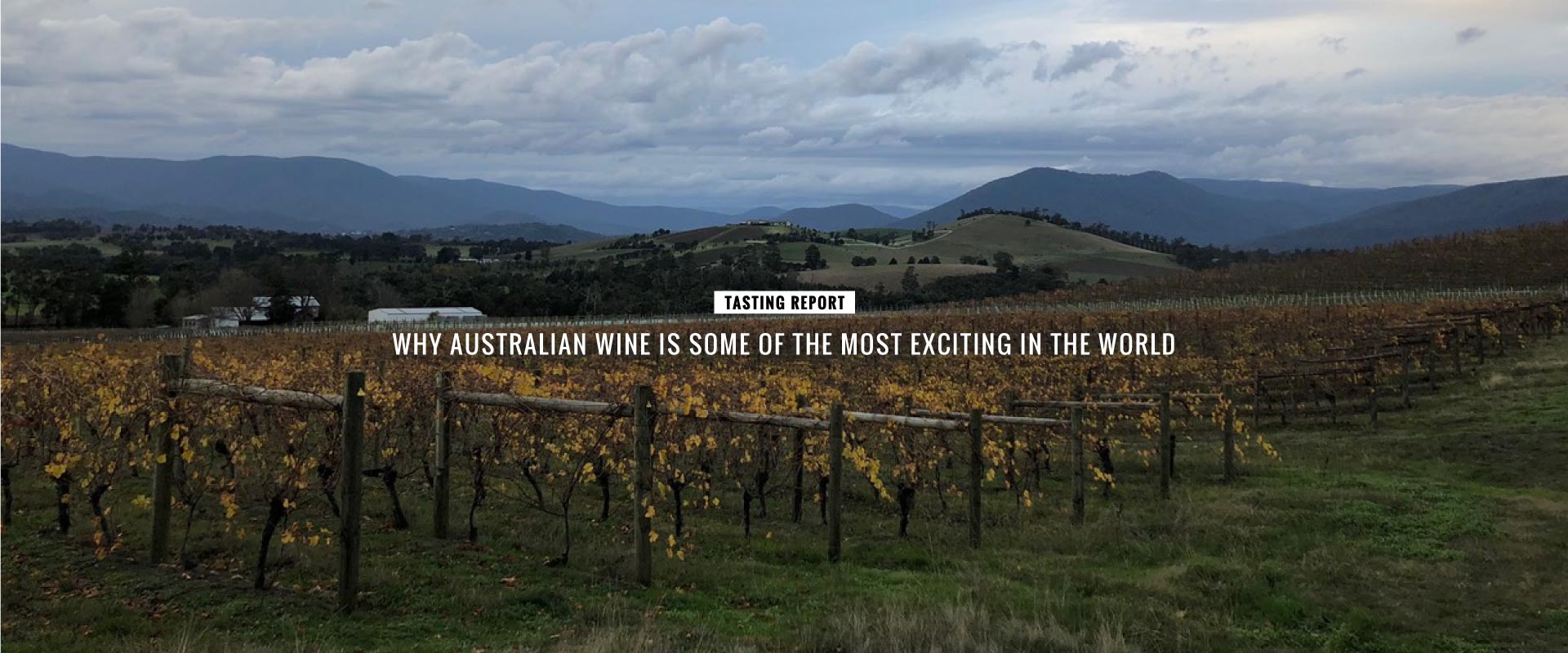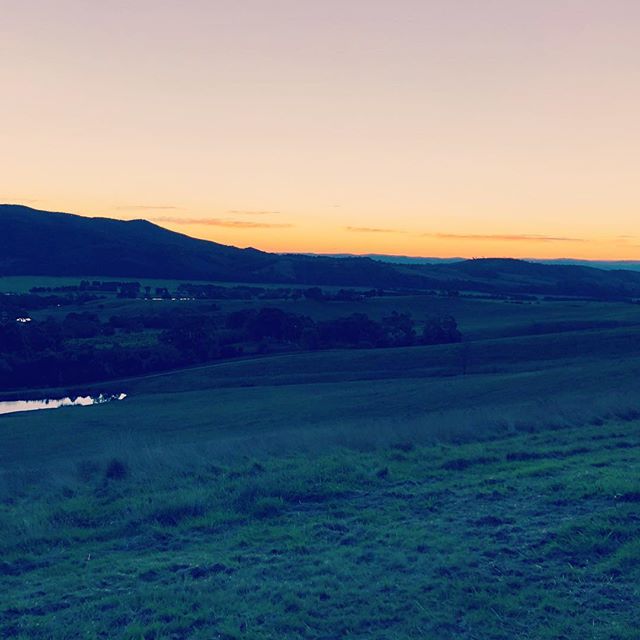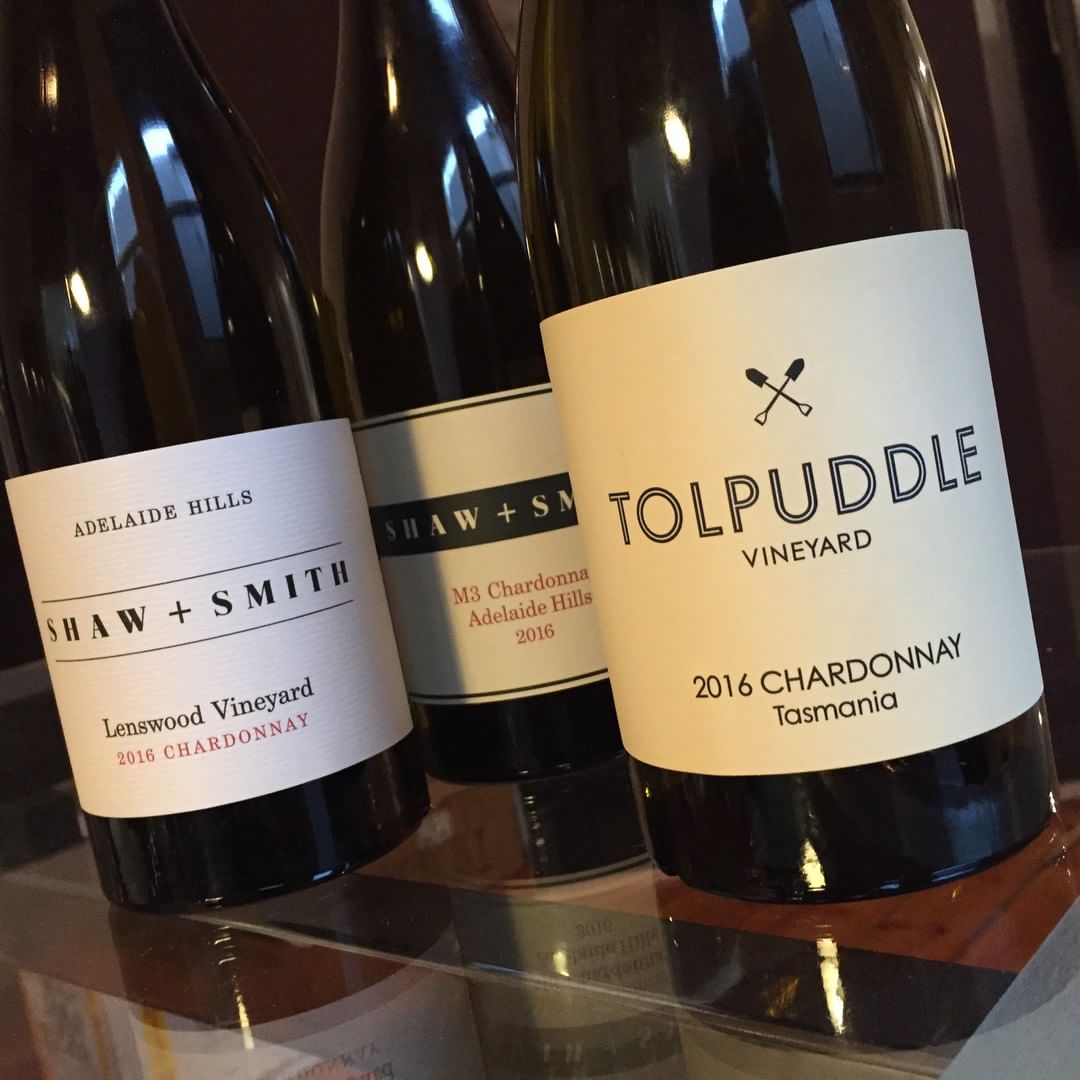Why Australian Wine is Some of the Most Exciting in the World

There’s a lot of momentum in the Australian wine space right now with huge inroads being made into the Chinese market and the slow-burning revival of more traditional export markets such as the United Kingdom and the United States.
But it is the candor at home that underpins the renewed interest and confidence that surrounds Australian wine where winemakers believe in themselves and their terroirs and wines, and our recent tasting of more than 1,000 wines highlights this. In fact, there’s unquestionably a great wine for every palate and preference in this year’s new releases. Today’s message for the wines of Australia is all about quality and diversity.

Nick Stock, Sandra de Pury and Jack Suckling at Yeringberg, where the de Pury family has continuously farmed for over 150 years in the Yarra Valley.
Jack Suckling and I staged this year’s marathon tasting in Victoria’s picturesque Yarra Valley with wines assembled from around the country, and we rated wines from the very best producers near and afar. The Australian playing field has leveled between what winemakers used to clearly separate as warm and cool-climate regions and the meeting place is that of balance.
Freshness can be found in every guise from aromatic whites to bold reds. Australian winemakers have an eye on drinkability at every step. The other big shift is that of confidence. Confidence in terroir, in older vines, in the work to nurture vineyards, respect for the land, and in producing wines that have unique flavor and style.
And with so many different regions, styles and vintages, all represented in high levels of quality in this all-Australian tasting report, here are the reasons why Australian wine is back in the game!
For starters, the business is very healthy and the demand for high-quality wine is underpinning trade as much as a thirst for a quality and value proposition from Australian wine. There’s a strong and growing appetite for authentic, regionally specific wine, particularly at premium price points.
Secondly, Australia is now accepted as one of the largest and most widely diverse wine producing nations. It is a vast continent with an almost endless array of stylistic possibilities, now producing a diversity of wines with great complexity. There’s a colorful and interesting life after full-bodied shiraz!
The challenges of the global market for Australian wine over the past decade has driven a period of reflection and soul-searching. Australia’s winemakers have emerged and become more aware, sustainably confident and determined to make great wine.
Australia’s food revolution has also impacted the wine scene a great deal. Anyone who has visited Australia understands the quality of the food and the incredible diversity of cuisines, which are driven by a truly multicultural society. The relaxed image of Australian lifestyle is intact, but the thought and effort poured into growing and preparing food in Australia are deeply connected to the evolving culture of the nation. Wine plays a strong part in this. Good food and great wine are hand in hand.
Moreover, the concept of wine in Australia is now integrated into day-to-day life, and wine knowledge and interest are now passed on to the younger generations with very different ideas. The traditional idea of wine as a status symbol or trophy to be admired has moved to the idea that wine is, first and foremost, for enjoyment and drinking.
Just as Australia’s idea of wine has evolved, our notion of grape varieties has also changed. The obsession with classical French grapes has been tempered with a strong interest in a more diverse set of varieties that are more suited to the Australian climate, cuisine and way of life. The winemakers are looking to places such as Spain, Italy, Portugal and Greece to find grape varieties that are suited to the Australian climate and can produce wines to match.
Let’s not forget the vine age of Australia’s plantings. The expansion of plantings to back Australia’s strong export boom in the 1990’s is now past their adolescent years and delivering qualities that are associated with the site rather than simple varietal fruit. The mature vines are underpinning more consistent quality and style. They produce wines that are more reliable and more age-worthy.

A stunning sunset in Yarra Valley, captured by the JamesSuckling.com team when they were tasting through more than 1,100 wines from all across Australia.
And just like many great winegrowing nations around the world, Australia has also moved towards more sustainable farming. Australian viticulture has shifted from focusing on very specific (and abstract) data-focused goals to a more holistic approach. With more sustainable and more environmentally friendly farming practices, winemakers produce better grapes and make wines that better expressive their place.
A strong undercurrent is that more and more winemakers are exploring principles of non-intervention in winemaking. More natural winemaking is being applied to better-farmed grapes and better-quality wines are being recognized in this space. A natural hierarchy of quality is developing in Australian natural wine circles too. This has influenced mainstream winemakers, who are now much less likely to intrude and overcook their wines. Moreover, lighter reds have come into focus, pulling fuller-bodied reds back from the brink. From over-extraction to too much oak, wine now is dialed into a tighter, more precise and more natural fit.
The key to the Australian wine industry moving forward is confidence. Australian winemakers now carry an even stronger drive and determination to improve the way they grow grapes and make wine. The younger generation of winemaking decision makers and custodians is better educated and well-traveled; they taste more wines at a younger age and access better resources and technology than ever before. Their hard work has paid off.
For consumers and the global wine trade, there has never been a better time to get into Australian wine, or get back into Australian wine, and celebrate all that’s great in the offering.

This is perhaps the most unique shiraz in the world. From ancient vines planted in 1867 in Hunter Valley, the quality of this wine is off the scales.
We found a number of standouts in wines from significant and rare, old vines that highlight what I wrote above. The Hunter Valley stalwart winery of Tyrrell’s has delivered a bounty of great reds all the way up to a perfect 100-point 2017 Old Patch from vines planted in 1867. You’ll have to search long and hard to find it, and it’s worth every step of the journey.
Henschke released their 2013 Hill of Grace. It’s made from an array of old vines dating back to the oldest 1860 plot, and the 2013 sailed through again in terrific form. Also, from the same vineyard, the younger plantings that make the 2012 Hill of Roses are surely knocking on the door for promotion into Hill of Grace. This 2012 is a standout wine.
Old vine grenache is making waves in McLaren Vale and riding the crest of interest in lighter framed wines with concentration of flavor. Yangarra, Wirra Wirra, S.C. Pannell and Ochota Barrels have all produced world-class quality in their latest offerings featured in this report.
On the more natural tip, Taras Ochota (Ochota Barrels) has delivered a stunning array of wines from the Adelaide Hills and McLaren Vale. His ethereal pinot noir bottling from 2017, Impeccable Disorder and A Forest are both seductive and precisely defined. Also, his 2017 +5V OV Chardonnay is easily the best he has made to date and joins an elite league of Hills chardonnays leads by Shaw + Smith and Murdoch Hill, both of who feature in the top chardonnays in this report.
On to other cool-climate wines of note, the prowess of Canberra District producer Clonakilla continues with stunning results from a not-always-easy 2017 harvest. The 2017 Shiraz Viognier and Syrah wines are a dream pair of clearly defined stylistic counterpoints. Keep an eye on their progress with Tumbarumba chardonnay too as the latest 2017 release is exceptional quality.
The Yarra Valley’s Hollywood 2017 vintage has delivered a bounty of great pinot noirs. Giant Steps is excelling in defining the modern Yarra pinot style with an exceptional array of single-site bottlings. Mac Forbes, Oakridge, Yarra Yering, Coldstream Hills, Hoddle’s Creek and Timo Mayer have all garnered high scores here.

These 2016 Aussie Chardonnays are high on our list. They come from two very different regions (Adelaide Hills and Tasmania) but are made by same team Shaw + Smith.
Yarra chardonnay also deserves a special mention as the stakes are high and the fight for top honors in the region is probably more fiercely competitive than any other part of Australia. Oakridge released a new bottling from the Henk Vineyard that sits jewel-like among their outstanding array of 2017 vintage wines.
Wider into the Victorian pinot offering and highlights are Bass Phillip’s 2016 pinots. From Crown Prince through to the seriously complex Premium and super concentrated Reserve bottlings, these are some of the finest wines Phillip Jones has produced from his Gippsland property. Look north to Macedon legend Bindi for granite soils and assuredly precise and age-worthy pinot noir in this report and Tolpuddle’s 2017 pinot from Tasmania is a landmark of coming to grips with the stylistic sweet spot of the vineyard. Seek it out.
Warm climate reds from the Barossa Valley are led by established names like Spinifex, First Drop, Head and Torbreck. The 2016 wines that are coming on to the market are nicely defined and moving towards freshness while still delivering effortlessly deep, rich flavors. Alex Head’s Blonde, Brunette, Redhead and Contrarian bottlings are all singing in vintage 2016 and watch for Yalumba’s inroads to stunning old vine grenache territory for that same vintage.
Cabernet and chardonnay continue to reign supreme in Margaret River, and there are many producers to choose from. Watch established names Vasse Felix, Cape Mentelle, Moss Wood and Xanadu, as they’re all setting a cracking pace at the top, while the newer micro-vigneron Cloudburst is at the top of their game, especially in chardonnay. As I wrote earlier, it’s never been a better time to drink Australia’s best wines! — Contributing Editor Nick Stock